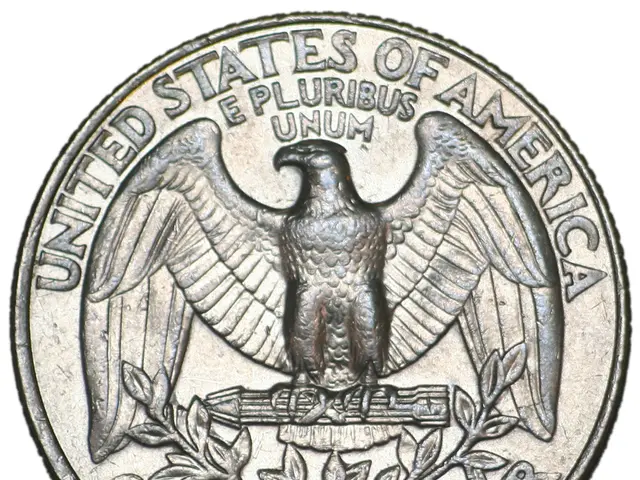"According to Oaktree, the United States continues to hold a prominent position in credit portfolios."
In the ever-evolving world of finance, the US private credit market continues to stand out as a beacon of resilience and growth. Despite the recent market uncertainties caused by April's tariff announcement, the sector has demonstrated remarkable adaptability and a robust recovery.
The tariff announcement injected a dose of uncertainty into the market, causing existing deals to take longer to complete and increasing the risk of a slowdown. However, private credit's broad lender base, the proliferation of distressed debt buyers, and the underlying market quality facilitated a swift rebound in activity.
One of the key advantages of the US private credit market is its flexibility in lending and deal structuring. Unlike banks subject to strict regulations, US private credit lenders can tailor loan terms to borrower needs, offering Payment-In-Kind ("PIK") interest options that allow borrowers to defer cash interest payments, easing short-term debt service burdens particularly useful in volatile interest rate environments.
Another significant advantage is the higher returns, or yield premium, that US private credit typically commands. This premium is justified historically by deal speed, certainty of execution, and willingness to provide longer loan tenors.
The US market also boasts a middle-market focus and growth opportunities. With extensive middle-market companies often underserved by traditional banks, private credit fills this gap, financing smaller and growing borrowers across sectors like healthcare, technology, and infrastructure.
Over a long period, including volatility from factors like trade tensions and interest rate increases, US private credit has delivered attractive risk-adjusted returns with a strong performance track record outpacing public high yield and leveraged loan markets.
Institutional investors, including pension funds and insurers, increasingly view US private credit as a core income-generating strategy, fueling growth in fundraising and assets under management, and creating a robust, mature ecosystem.
Compared to other global markets, the US benefits from a larger, more developed private credit market with deep capital pools, established legal frameworks, and a well-developed private lending infrastructure supporting variety in deal sizes and structures. The post-2023 banking retreat in the US heightened the demand and opportunity for private credit, accelerating its growth relative to other regions where bank lending remains more dominant.
Europe, while having a broad direct lending space and a strong macroeconomic backdrop, does not offer a comparable depth to the US market. The region's private credit market lacks the same level of structural flexibility, yield premium, broad middle-market coverage, and strong institutional investor support as its US counterpart.
In the current volatile economic environment, Oaktree, a leading global investment manager, advises prioritizing managers with strong credit selection over those focused on rapid capital deployment. This strategy is expected to yield better returns, especially as the returns on credit investments become less dependent on strong US economic growth.
In conclusion, the US sub-investment grade private credit market's advantages lie in its structural flexibility, higher and resilient yields, broad middle-market coverage, and strong institutional investor support, distinguishing it from many global counterparts. As market volatility continues, these advantages are likely to remain key drivers of the sector's growth and resilience.
[1] Private Credit: The New Income Generator. Oaktree Capital Management. (2021). [2] Private Credit: A New Era for Alternative Lending. Preqin. (2020). [3] The Evolution of Private Credit. KKR. (2020). [4] Private Credit: A Source of Stable Returns. Blackstone. (2019). [5] Private Credit: The Future of Fixed Income. Goldman Sachs Asset Management. (2018).
- Amidst market uncertainties, the US private credit market's resilience and growth can be attributed to its structural flexibility, offering Payment-In-Kind interest options that provide relief during volatile interest rate environments, and its broad lender base that facilitates a swift rebound in activity.
- In the current volatile economic climate, US private credit continues to be a beacon for institutional investors like pension funds and insurers, as it offers higher returns, or yield premium, with a strong performance track record and a robust, mature ecosystem, making it a core income-generating strategy.






